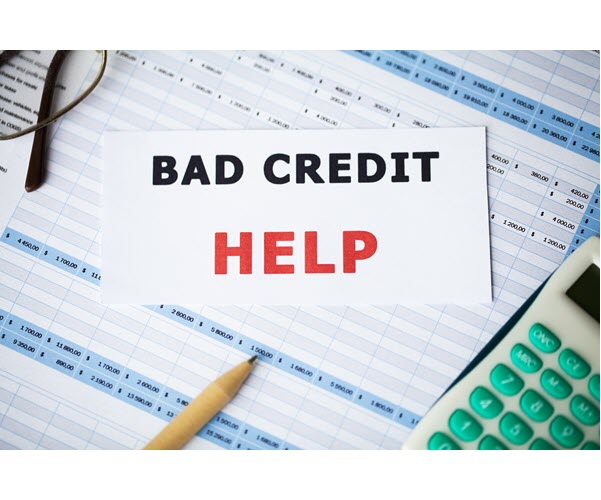How to Fix a Bad Credit Score Quickly & Easily

Sky Blue Credit – The Smarter Credit Repair Solution
Faster disputes, credit rebuilding, debt validation, and more.
Stop losing money to bad credit.
Fix your credit with Sky Blue.
It’s all too easy these days to make a few financial missteps that snowball into credit trouble. An unexpected medical bill here, a home repair there, and soon a few late payments or a credit card overspend can send your score into a downward spiral.
The consequences of bad credit are real. It can prevent you from getting approved for loans and credit cards, cause difficulty renting an apartment, lead to higher insurance rates, and generally make life more expensive.
But even if you’ve made credit mistakes in the past, the situation is not hopeless. There are 6 actionable steps you can take to fix bad credit and get your finances back on track. Read on…
Table of contents
Understanding your FICO credit score
Before digging into specific steps, it helps to understand what makes up your vital FICO credit score. There are 5 key factors that combine to calculate your score:

- Payment History (35%): Holds the most weight at 35% of your score. Missed or late payments hurt.
- Amounts of Debt (30%): Measures how much you owe compared to credit limits. High utilization can tarnish your score.
- Length of Credit History (15%): Assesses age and activity of credit accounts. A longer credit history is generally considered more favorable.
- Credit Mix (10%): Evaluates the variety of credit types used. A healthy mix of credit, handled responsibly, can positively impact your score.
- New Credit Inquiries (10%): Records new applications for credit on your report. Too many inquiries in a short time can lead to a temporary dip in your score.
Now that you have a clear understanding of the key factors that affect your FICO credit score, let’s delve into the practical steps you can take to improve each component and repair your credit.
1. Check your credit report

The first step to fixing your credit is getting your hands on your credit reports so you can review them for errors or issues that may be dragging your score down.
You can obtain your credit reports for free once per year from each of the bureaus at annualcreditreport.com. Review all sections in your reports – including personal information, account history, inquiries, and public records and look for:
- Late or missed payments
- Accounts in collections
- High credit utilization
- Errors in personal info, addresses, account history
If you see any potential errors or outdated information, dispute it with the credit bureaus by providing documentation to back up your claim. Common disputes include:
- Accounts that don’t belong to you
- Incorrect account status or balances
- Inaccurate personal information
- Old negatives that should be removed
The credit bureaus are required to investigate dispute claims within 30 days. This can potentially remove the incorrect items and boost your credit score.
OR
If disputing items on your own seems daunting, consider using a credit repair service like Sky Blue.

Sky Blue has over a decade of experience successfully disputing and removing inaccurate or unverified items from credit reports on behalf of clients. Their experts thoroughly review your reports, identify dispute opportunities, handle all bureau communication on your behalf, and get real results in improving your credit. Many clients see 40-50 point score increases or more after starting with Sky Blue.
Here is how to get a credit report and fix potential credit report inaccuracies with Sky Blue:
- Go to the Sky Blue Credit Signup page and register.

- Follow the instructions to get free credit reports.
- Put your feet up as Sky Blue Credit pores over your credit history and challenge any questionable or inaccurate items with the credit bureaus.

- It could take the bureaus up to 35 days to complete the disputes. According to user feedback, Sky Blue is known to be 10 days faster than the rest of the credit repair companies.

Also read: How to dispute errors on credit reports
2. Pay down your debts

Missed payments hurt your payment history – the single biggest factor determining your credit score. So if you have any outstanding debts, make sure to clear them immediately.
As you work to pay down credit card balances, you can choose the debt avalanche or snowball method.
- The debt avalanche method prioritizes repaying the cards with the highest interest rates first. This minimizes the total interest paid.
- The debt snowball method focuses on paying off your smallest balance cards first, then rolling those payments to the next smallest. This gives you psychological motivation as you pay off accounts.

Another option to repay your credit card balances is to get a debt consolidation loan. With this approach, you take out a consolidation loan to pay off your credit cards in full. Then, you make fixed monthly payments to the consolidation lender to pay back the loan over time. While consolidation loan charge interests, the interest rates on debt consolidation loans are typically lower than credit card interest rates.
Also read: 5 Best Personal Loans for Bad Credit
3. Always pay your bills on time

Once you’ve caught up on past-due accounts, paying bills on time should become your new normal. Consider setting up autopay through your bank or card issuer’s website to ensure you never miss another due date. For bills that can’t be auto-paid, you can set email, text, or calendar reminders as a backup.
Even being a day or two late can trigger late fees and increased interest rates. While payments are not reported as late to the credit bureaus until they become 30 days past due, it’s best not to cut it close and risk penalties by paying late.

If you need help managing your finances, you can use a budget app like Simplifi. It enables you to connect all your financial accounts in one easy dashboard.
With Simplifi, you can create custom reminders for bill due dates, project your cash flow to plan ahead, and develop a personalized budget aligned to your income and expenses.
4. Keep a low credit utilization ratio
Your credit utilization ratio is the percentage of your total credit limits that you are currently using. Lenders look at this ratio to evaluate how you manage finances. For example, if you have $5,000 in combined balances on credit cards and $20,000 in combined credit limits, your utilization ratio is 25%.
Experts typically recommend keeping this ratio below 30% across all cards for the best credit scores. The lower you can keep your utilization, the better.
Paying down balances and limiting new credit applications helps decrease the ratio. You can also ask issuers to raise your credit limits after some on-time monthly payments to lower utilization. Also, spread balances across multiple cards instead of maxing out one card while leaving others empty. Your utilization ratio on each card matters too.
By actively minimizing how much you use your available revolving credit limits, you can effectively reduce your utilization ratio and credit reliance over time.
5. Apply for new credit sparingly

Although applying for new credit may help boost your credit score, it is essential to limit how frequently you submit new credit inquiries. Unnecessary or frequent applications can take a toll on your credit score in the following ways:
- Hard Inquiries: Every time you apply for credit, a hard inquiry is generated and remains on your credit report for up to two years (though the score impact fades after one year). A single inquiry may only lower your score a few points, but multiple inquiries within a short timeframe like 2-3 months can have a larger detrimental effect.
- Reduced Average Age of Accounts: Length of credit history accounts for 15% of your FICO Score, with the average age of all accounts playing a part. Opening new accounts reduces the average age, especially if you’re new to credit, because it can drag down your credit score.
- Perception of Credit Desperation: Numerous recent inquiries on your credit reports may signal to lenders that you are desperate for credit and may struggle to repay borrowed funds. Consequently, lenders may be more inclined to reject your applications.
6. Keep unused credit cards open

After paying down balances, you may feel tempted to close old credit cards that you no longer use. However, keeping these unused cards open can have several benefits for your credit re-building. It can increase your available revolving credit, establish a longer credit history, and contribute to a more diverse credit mix, – which ultimately strengthens your credit profile.
If you worry about racking up balances on these paid-off cards, just remove them from shopping sites and tuck the physical cards away securely. Just remember though, issuers can close truly inactive cards after some time. Also, if the annual fees exceed the credit benefits, it may make sense to close the card.
Conclusion
To conclude, rebuilding damaged credit is a long process that requires patience and diligent financial habits. There are no quick fixes or overnight solutions.
The most important steps are checking your credit reports for errors to dispute, paying down debts, making on-time payments, keeping credit utilization low, limiting new applications, and keeping old accounts open.
In the meantime, don’t believe claims about instant credit repair. Real change happens slowly over months and years as you persist in developing good financial practices. If you stay committed to the credit rebuilding process, you can steadily improve your score and restore your financial health over the long term. The best time to start is now!
Image by jcomp on Freepik
Photo by rupixen.com on Unsplash














